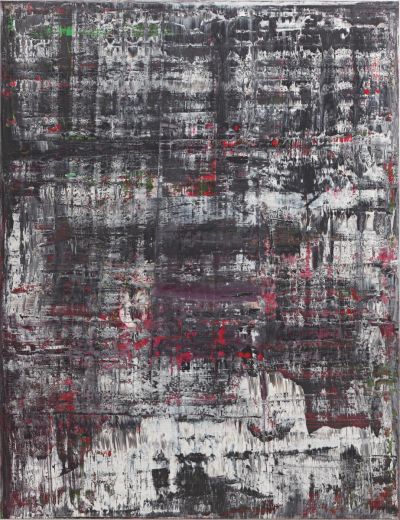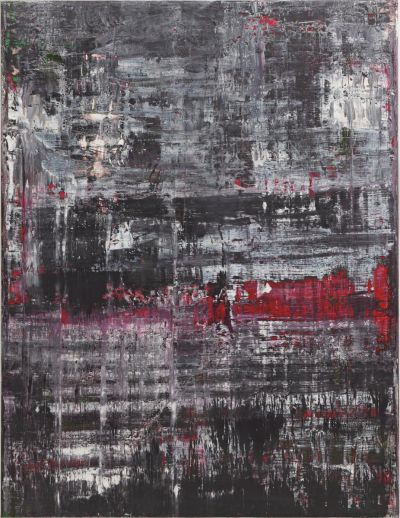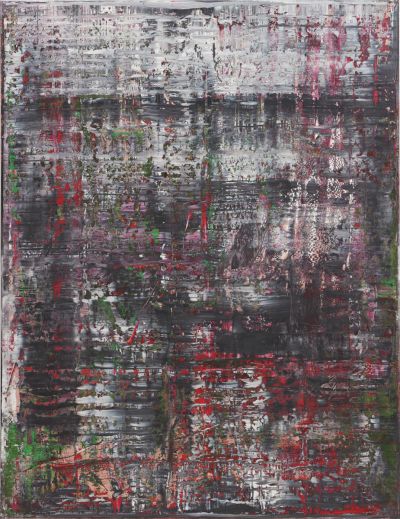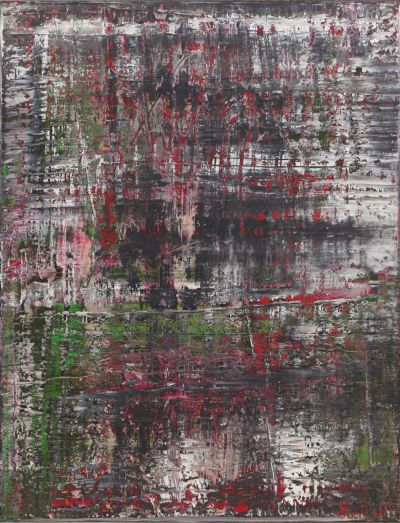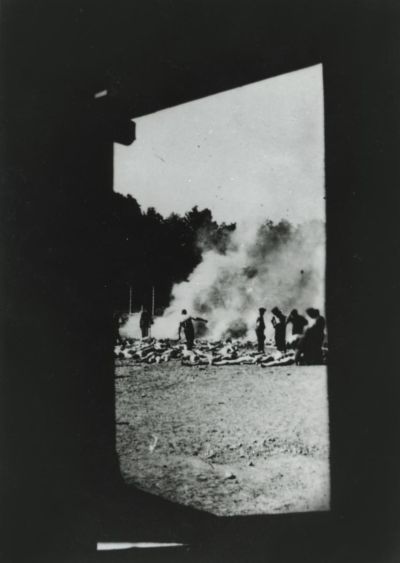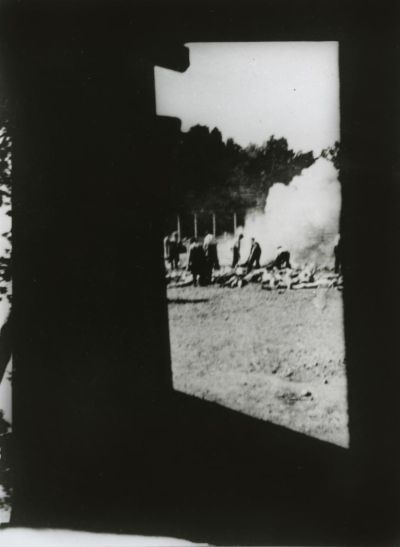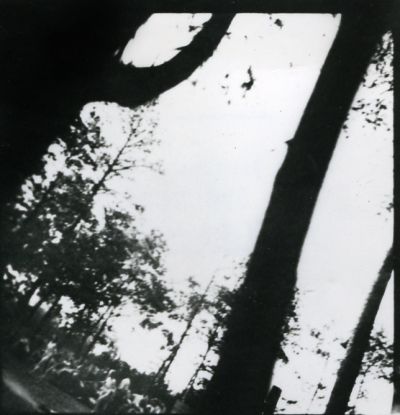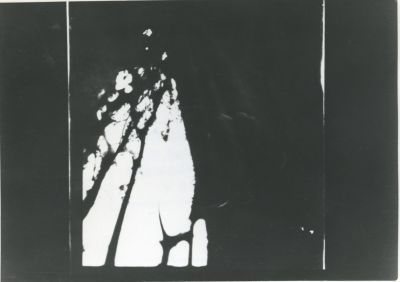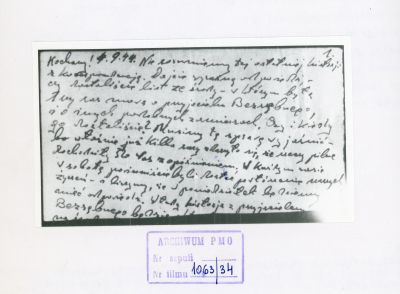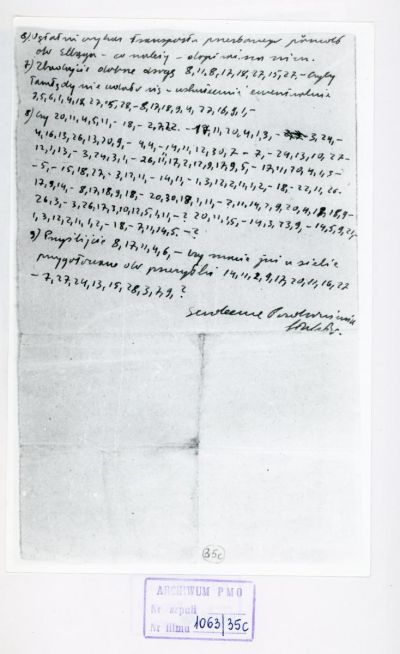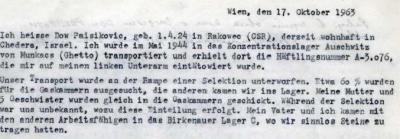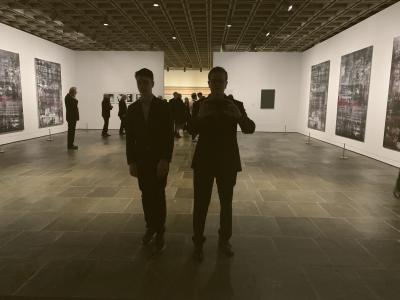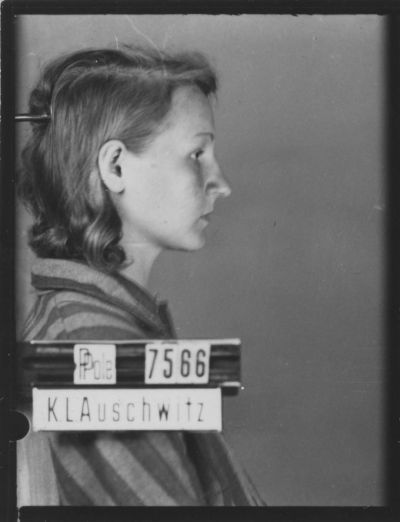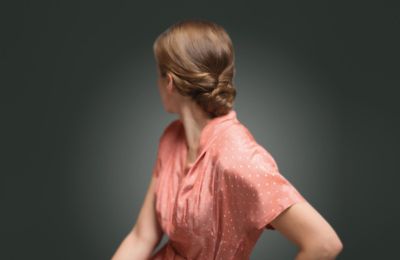“Birkenau” by Gerhard Richter

Birkenau by Gerhard Richter as a place of remembrance
After 1945 there were only a few attempts to use authentic pictorial material from the concentration camps for artistic purposes. The shock of the mass murder and the respect for the victims were simply too great.
Władysław Strzemiński, a well-known Polish avant-garde painter, presented his nine-part cycle of collages entitled "My Jewish Friends" to the public in 1945. He had added documentary black and white photographs from the Warsaw ghetto, deportations and concentration camps to abstract compositions drawn with a pencil and using Suprematist lines. This led to an ongoing discourse in the international art and culture scene as to whether it was morally justifiable to use visual material from the factories of mass destruction.[1] With one exception, Strzemiński gave his cycle to the International Holocaust Memorial, Yad Vashem, in Israel as the only conceivable and justifiable place for its presentation and safekeeping.
After Strzemiński, Jean-Luc Godard's monumental eight-part film Histoire(s) de Cinema[2] he began it in 1988 and only completed it ten years later – was the first attempt to insert authentic photos and film sequences from the concentration camps into an artistic production with a wide-ranging impact. The shocking archive pictures from the death factories now reached a mass audience for the first time. Godard's intention to address the "guilt" of the medium of film in not having filmed the camps, soon led to an international discussion about the use of such images, the "images in spite of everything"[3], as the French philosopher Georges Didi-Huberman described them in a publication in 2003. As examples of iconographic material, Didi-Huberman chose precisely those photographs taken by the Jewish task force in Auschwitz-Birkenau in 1944 for his reflections on the possibility or even the necessity of using "images in spite of everything" in the cultural business.[4]
The camera and its film were smuggled into the camp by a Polish resistance group[5]. In August 1944 a Greek Jew, Alberto Errera, took seven pictures from a hiding place showing, among other things, undressed women on their way to the gas chamber and members of the Sonderkommando burning bodies in the open air[6]. A Polish woman, Helena Datoń, brought the exposed film out of the camp in a toothpaste tube and handed it over to members of the Polish resistance group in Krakow along with a note from the Polish prisoners Stanisław Kłodziński [7] and Józef Cyrankiewicz (later Polish Prime Minister in the Communist government in 1947-52 and 1954-70)
[1] Władysław Strzemiński, "Moim przyjaciołom Żydom" (To My Jewish Friends), 1945, a nine-part cycle, collaged drawings. A version of this cycle is now in the National Museum in Kraków. For further information on the cycle (in Polish), see: Luiza Nadar: http://www.riha-journal.org/articles/2014/2014-oct-dec/special-issue-contemporary-art-and-memory-part-1/nader-strzeminski-pland also by Eleonora Jedlinska http://www.przeglad.uni.lodz.pl/t/2014nr1/05.pdf
[2] Godard typically uses details from the Polish feature film "Pasażerka" (The Passenger) by Andrzej Munk in his monumental work. The 1963 film, which could not be completed due to the director's sudden accidental death, is based on the eponymous novel by Zofia Posmysz (published in Polish in 1962), who survived the Auschwitz concentration camp.
[3] Georges Didi-Huberman, Bilder Trotz allem, Paris 2003, German edition, München 2007. See page 203.
[4] In the place indicated p. 27 ff.
[5] See: Records and the collection of evidence on Nazi crimes in the State Museum at Auschwitz-Birkenau, Oświęcim, pp. 353-354.
[6] See also (in English): https://en.wikipedia.org/wiki/Sonderkommando_photographs and (in English und German): https://en.wikipedia.org/wiki/Alberto_Errera
[7] Quoted from Didi-Huberman, in the place indicated, pp. 32-33
In 2008 Gerhard Richter first saw four reproductions of the photographs taken at that time in the Frankfurter Allgemeine Zeitung, dated 11th February. Fascinated by the impact of the photographs he decided to include them in his collection of photographs and motifs (the famous Atlas), which constitute, as it were, a documentation of his iconographic memory. He finally completed painted copies of the four photographs and hung them in his studio. Soon after that, he decided to use them as models for a work that was to bear the title Birkenau. After numerous considerations and studies he produced the final version in 2014, consisting of four large-format abstract paintings (oil on canvas, each measuring 260 x 200 cm).
Richter, however, made the Birkenau originals completely invisible by painting over them. Birkenau thus became a purely abstract work. However, the title, the documentation provided by the artist and the museum presentation, in which the work was consequently exhibited along with the photographic originals, make the original templates present in a more than subtle way. The knowledge of the original photos is thus constantly present.
Since the first presentation of the work in the Museum Frieder Burda in Baden-Baden in 2016, the creation process, its impact and the manifold contexts of Richter's Birkenau have been frequently and extensively described, reviewed and interpreted.[8] It is significant, however, "that the work, which is dedicated to the Holocaust, is also a remarkable memorial of the history of Poles in Germany, something that the artist has personally acknowledged.[9] Without the Polish resistance movement Richter's Birkenau would not have existed.
By covering the visible source of this memory with a painterly gesture, Richter has constructed a place of remembrance and stimulated a debate on the subject.[10] He creates a balance between the memory and the aesthetics of the abstract, which allows a peculiar double existence of both areas. Out of respect for what happened in the Birkenau camp, Richter does not show the harrowing documents, but makes them tangible and tangible in his paintings through artistic means. The artistic work entitled Birkenau contains the camp Birkenau, "present but not visible".[11]
The artist addresses what is probably the darkest chapter in human history and takes viewers on a tightrope walk between memory and aesthetics, cruelty and beauty, bewilderment and curiosity, leading them to the borderline between what is obvious and what is being repressed. However, in the end aesthetics win out: the painting is what Richter as an artist has to contribute to this theme. It is an "image in spite of everything," which, as Richter observed, is primarily intended to provide us with solace.[12]
[8] See above all: Gerhard Richter, Birkenau, Museum Frieder Burda, Köln 2016 and Benjamin H.D. Buchloh, Gerhard Richters Birkenau-Bilder, Köln 2016
[9] Jacek Barski: Conversations with Gerhard Richter on 12. and 26. March 2018
[10] Paul Valéry (1871-1945) referred to the paradox of memory in his Cahiers (1921-1922): "Sensitivity is the instantaneous / incessant / phenomenon that charges the'memory' in a certain direction - through quanta; and that discharges it again - again through quanta - in the same direction. If the charge'memory' itself is felt, then we are dealing with the phenomenon of expectation. Waiting means perceiving an upgrowth. However, the discharge not only reduces the charge, but also allows it to grow or at least makes it more suitable for all dischargers... Memory is therefore not accumulation, but construction. The content of memory is an act - a current event"; Paul Valéry, Cahiers, Paris 1973-1974, quoted from the German edition: Frankfurt am Main, 1989, volume 3, p. 441.
[11] "Present but not visible" is part of the postmodern discourse as a dictum at the latest since 2006 (year of publication of Thomas Pynchon's Against the Day, New York, 2006, German Edition Against the Day, see here p. 593).
[12] In the place indicated
Gerhard Richter refuses to hand over his work Birkenau to the art market. The original is the property of the Gerhard Richter Foundation and remains freely accessible to the public on a permanent basis. A digital version of the four-part oil painting can be found in the Reichstag building belonging to the German Bundestag in Berlin.
In November 2019, the work will be shown in a solo exhibition by Gerhard Richter at the Metropolitan Museum of Art in New York. One of the rooms will show the four Birkenau paintings, the reproductions of the same size and the four photographs that inspired the artist to create Birkenau.
Jacek Barski, March 2020
Gerhard Richter's official homepage:
Studies for Birkenau from the Atlas by Gerhard Richter:
Birkenau at the Manchester International Festival 2015 with music by Arvo Pärt:
https://www.gerhard-richter.com/de/videos/exhibitions/richter-part-257
Further reading:
93 Details aus meinem Bild Birkenau, ein Kunstbuch von Gerhard Richter, Köln 2015
Gideon Greif, „Wir weinten tränenlos...“. Augenzeugenberichte des Jüdischen ´Sonderkommandos´ in Auschwitz, Frankfurt am Main, 1999
Dow Paisikovic, Zeitzeugenaussage vom 17. Oktober 1963: Staatliches Museum und Gedenkstätte Auschwitz-Birkenau, Polen
Furthe information (in German):
https://de.wikipedia.org/wiki/Auschwitz-Album#„Bilder_trotz_allem“
Further information (in English):
The Auschwitz Album von Lilly Jacob-Zelmanovic Meier auf der Website von Yad Vashem:
http://www.yadvashem.org/yv/en/exhibitions/album_auschwitz/index.asp
Sonderkommando and Alberto Errera:
https://en.wikipedia.org/wiki/Sonderkommando_photographs
https://en.wikipedia.org/wiki/Alberto_Errera
Further information (in Polish, po polsku):
Lekcja internetowa o Sonderkommando: http://lekcja.auschwitz.org/10_sonder/
Porta Polonica would like to express its gratitude to Gerhard Richter and his team, as well as to Dr. Wojciech Płosa, the Head of the Archive at the State Museum of Auschwitz-Birkenau (Państwowe Muzeum Auschwitz-Birkenau) for their support during the creation of this article.
About Painting After All in Metropolitan Museum of Art:
https://www.metmuseum.org/metmedia/video/collections/modern/gerhard-richter
https://www.sueddeutsche.de/kultur/gerhard-richter-ausstellung-new-york-painting-after-all-1.4830742
https://www.nytimes.com/2020/03/05/arts/design/gerhard-richter-review-met-breuer.html
https://www.monopol-magazin.de/gerhard-richter-new-york-met-breuer
https://www.newyorker.com/magazine/2020/03/16/the-dark-revelations-of-gerhard-richter
